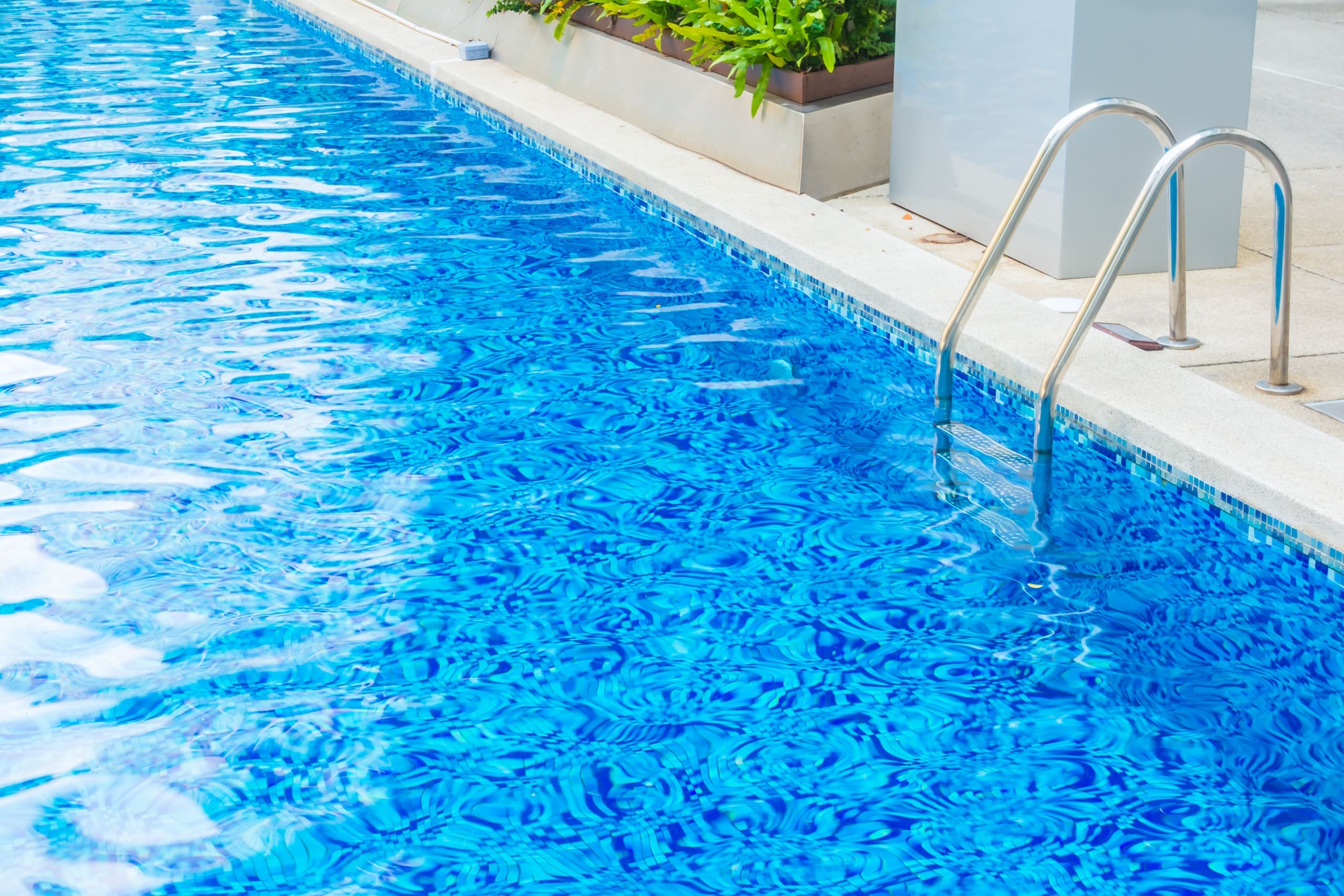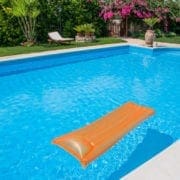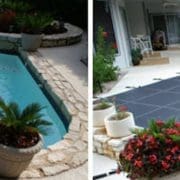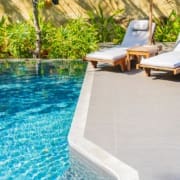How to Keep Your Pool Clean, Safe, and Sparkling
Owning an inground swimming pool is one of life’s great pleasures. It’s your own personal backyard oasis for fun, relaxation, and fitness.
But keeping your pool clean, safe, and sparkling takes more than just skimming the surface.
With proper maintenance and routine care, you can protect your investment and ensure your pool is always ready for a swim. Here’s your practical how-to guide on maintaining your inground pool. Check out the tips on everything from chemical balance and cleaning schedules to knowing when to call in the pros.
Develop a Routine Maintenance Schedule
Regular care is essential for maintaining your inground pool in optimal condition. Weekly maintenance helps you stay ahead of potential issues and keeps water clean and safe. A typical pool maintenance schedule includes:
- Skim and Empty Baskets: Remove leaves, bugs, and debris from the water surface daily or as needed. Don’t forget to empty the skimmer and pump baskets to improve water circulation and efficiency.
- Brush Walls and Steps: Algae and bacteria can cling to pool surfaces. Brush the walls, steps, ladders, and corners at least once a week to prevent buildup.
- Vacuum the Pool: Use a manual or automatic vacuum at least once a week to remove dirt and debris from the pool’s bottom. If you have a robotic cleaner, let it run a few times a week, depending on usage and the surrounding landscape.
Keep an Eye on Water Chemistry
Balanced pool water isn’t just about clear water. It’s crucial for safety, swimmer comfort, and to protect your pool’s surfaces and equipment. Here are the core components to monitor:
- pH Level (Ideal: 7.4–7.6): A balanced pH prevents irritation to eyes and skin and protects equipment from corrosion or scale buildup.
- Chlorine (Ideal: 1–3 ppm): Chlorine disinfects your pool by killing bacteria and algae. Check chlorine levels at least twice a week, especially during hot or rainy weather.
- Alkalinity (Ideal: 80–120 ppm): Total alkalinity stabilizes the pH. Low alkalinity causes pH to fluctuate wildly, while high alkalinity can lead to cloudy water.
- Calcium Hardness (Ideal: 200–400 ppm): This prevents plaster damage and protects metal parts from corrosion. Low calcium can damage plaster and tile grout, while high levels can lead to scaling.
- Cyanuric Acid (Ideal: 30–50 ppm for outdoor pools): Also known as stabilizer or conditioner, this helps chlorine last longer by protecting it from UV degradation.
You can test the water with home kits or strips. For best results, bring us a water sample on a regular basis. We’ll run it through our automated system and provide you with a free analysis of what your pool needs (or doesn’t need).
Stay on Top of Maintenance
Your pool’s filtration system is the heart of its cleanliness. Good water circulation distributes chemicals, removes debris, and discourages algae growth.
- Pump: Run your pool pump 8–12 hours a day during swimming season. For energy savings, consider using a variable-speed pump.
- Filter: Clean your filter regularly based on the type you have.
- Sand Filters: Backwash every 1–2 weeks or when pressure rises 8–10 psi above normal.
- Cartridge Filters: Remove and clean every 2–6 weeks, depending on usage.
- DE Filters: Backwash and recharge with DE powder as needed, typically once a month.
- Skimmer and Return Jets: Ensure the skimmer is drawing properly and that the return jets are positioned to circulate water toward the skimmer.
Shock the Pool When Necessary
Even well-maintained pools require occasional shock treatments. Super-chlorinate the water to eliminate bacteria, chloramines (spent chlorine), and organic contaminants. You should shock your pool:
- After heavy pool use (like a party)
- Following a rainstorm
- If the water looks cloudy or has an odor
- Once every 1–2 weeks as a preventive measure
Follow the label instructions carefully and run the pump for several hours afterward to thoroughly circulate the shock treatment. Questions? Let us know!
Prevent and Treat Algae Growth
Algae can bloom seemingly overnight, especially in warm, stagnant water. To prevent algae:
- Keep chlorine levels consistent
- Brush and vacuum regularly
- Use an algaecide as part of your routine
- Maintain proper circulation and filtration
If algae do appear, treat the pool with a targeted algaecide or shock treatment and scrub the surfaces thoroughly.
Keep an Eye on the Water Level
The water level in your pool should be halfway up the skimmer opening. Too low, and your pump could run dry and burn out. Too high, and the skimmer won’t function properly.
Check the water level weekly and adjust with a garden hose or drainage pump as needed.
Know When to Call the Pros
Even the most diligent pool owners occasionally need expert help. Call a pool professional like Fiesta Pools and Spas if:
- Water remains cloudy or green despite your efforts.
- Your pump, filter, or heater isn’t working correctly.
- You suspect a leak or see water loss that isn’t due to evaporation.
- It’s time for a deep clean, pool opening, or winterizing.
Professionals can also conduct seasonal inspections, provide expert chemical balancing, and identify small issues before they escalate into costly repairs.
Final Thoughts on Clean Pools
Maintaining your inground pool doesn’t have to be overwhelming. By following a consistent schedule, maintaining balanced water chemistry, and knowing when to seek professional help, you’ll ensure your pool remains a safe, clean, and refreshing retreat throughout the entire season.
A little routine effort goes a long way toward protecting your investment and maximizing your pool enjoyment.
At Fiesta Pools and Spas, we’re always here for you. Whether it’s pool chemicals, pool service, a new accessory like a robot, or even pool remodels, you can count on us to help!
















